The trumpet is synonymous with the sound of jazz, but just who are the best jazz trumpet players of all time? Here are the greatest jazz trumpet players ever, but have we ever missed your favourite? The list is in alphabetical order.
- Six of the best: jazz cameos in pop
- Six of the Best… Jazz hit singles
- The 20 Greatest Pianists of all time
- 25 greatest jazz saxophonists of all time
- 28 best ever jazz pianists
Louis Armstrong (1901-1971)
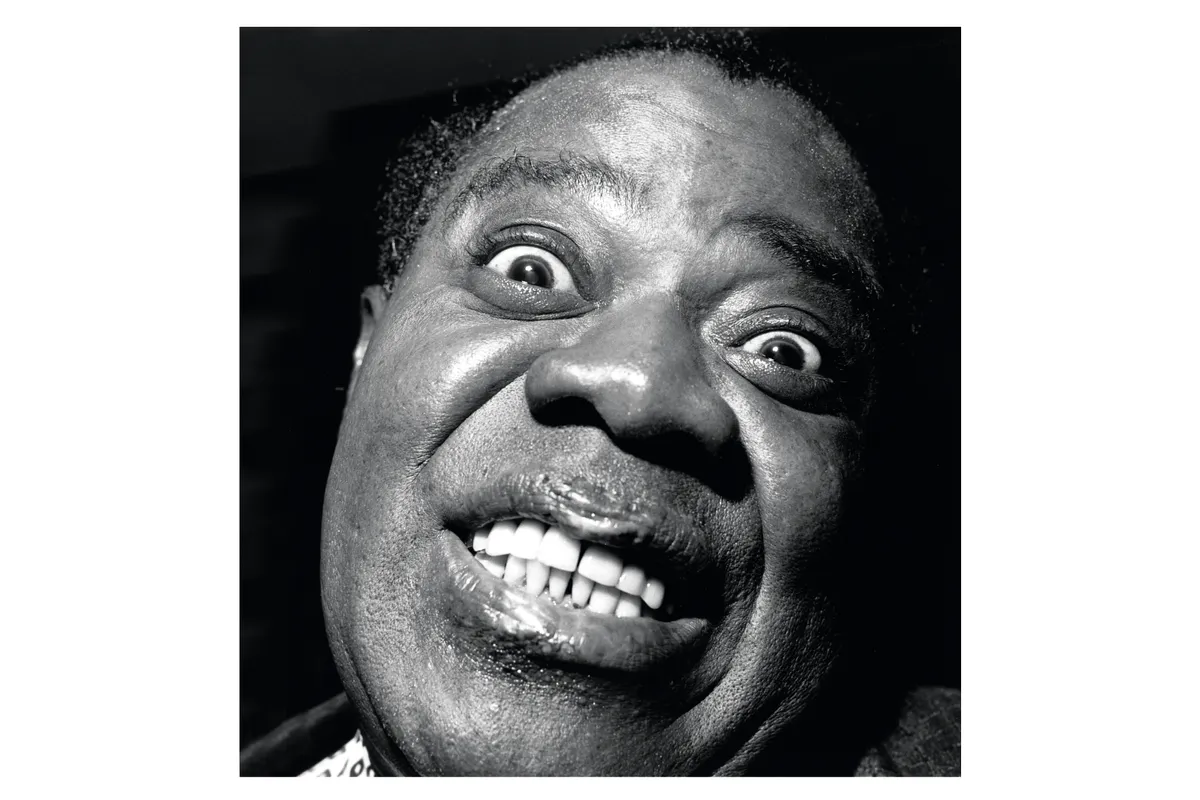
In jazz, all roads lead back to Louis Armstrong. He is the supreme example of the vitality of the past animating and challenging the present. Trumpeter Art Farmer acknowledged him as ‘still the mark people go after when it comes to sheer emotion speaking through music’, and the contemporary British star Guy Barker declared that any jazz lacking the Armstrong spirit was ‘going to be missing a lot’.
The best place to experience Armstrong’s perennially galvanising effect is the astonishing set of records he made between 1925 and 1929, collectively known as his Hot Fives and Sevens. These dazzling small-group performances transformed jazz once and for all, from a jolly accompaniment for dancing to a language of limitless expressive power and virtuosity. Wonders abound, from the breathtaking stop-time solos in ‘Cornet Chop Suey’ and ‘Potato Head Blues’, to the perfect structure of ‘Savoy Blues’, and the exuberant swing and effortless technical fireworks of ‘Hotter Than That’.
Besides his startling playing, Armstrong’s unique scat vocals brought a new dimension to improvisation: a piece like ‘Heebie Jeebies’ seems an outpouring of pure joy, a song that doesn’t need words to convey its rhythmic and melodic gusto. And on the magnificent ‘West End Blues’. his trumpet and vocal powers combine to produce a masterpiece of searing emotion.
Every one of the Hot Fives and Sevens proclaims Armstrong’s genius, with the same immediacy as when they first appeared. It is worth having the complete series, to marvel at the consistency, mastery and surprise of his invention, raising even the most trivial novelty to another level. The four-CD box on JSP provides the basic canon, well-mastered, and also offers some of Armstrong’s subsequent work with a big band, as he began to cross over from jazz genius to international showbiz star.
And that, of course, is how most people know him – Satchmo, the beloved, gravel-voiced entertainer. But the Hot Fives and Sevens reveal his real achievement – the creation of a body of music which is truly classic: once heard, unforgettable an enduringly new.
Chet Baker (1929-1988)
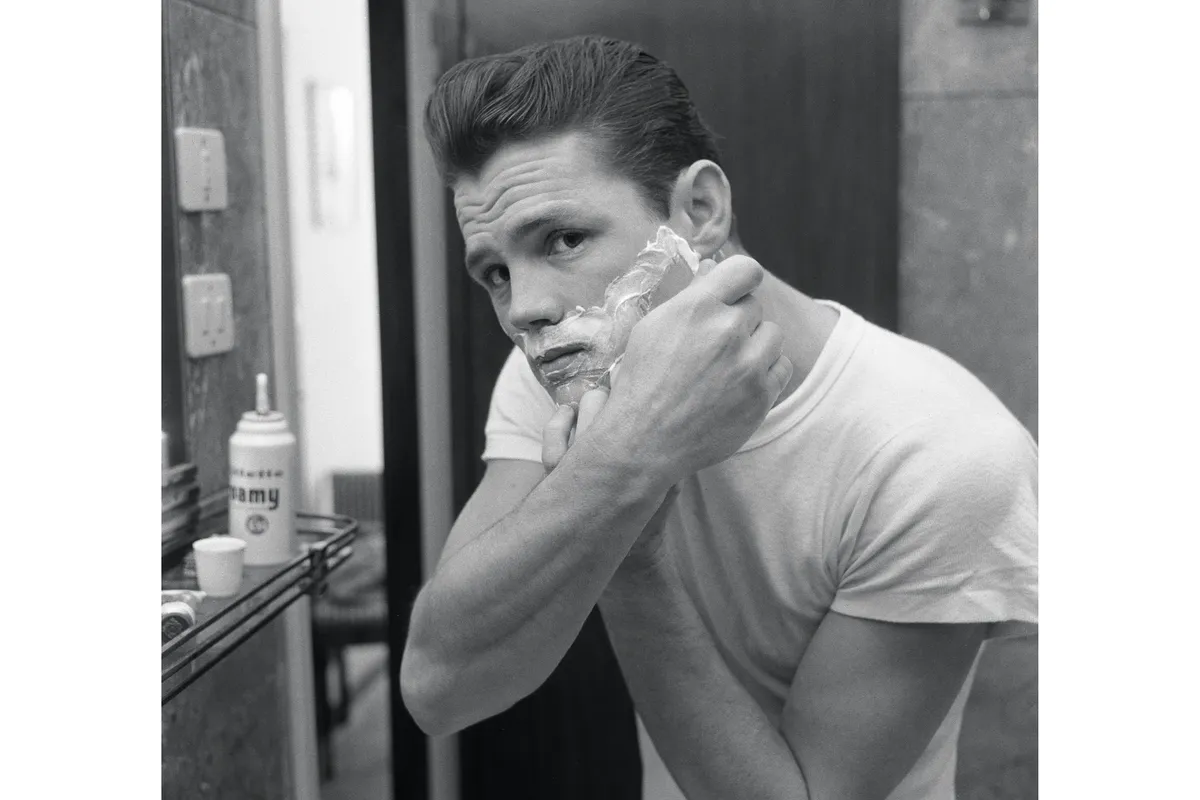
Angel, devil or both, Chet Baker is the stuff of jazz legend. By his mid-20s, the Oklahoma country boy was famous, leaping to stardom in 1953 with saxophonist Gerry Mulligan’s trend-setting West Coast quartet and winning polls on trumpet. His reputation was no mere publicity bubble. After playing with Baker in his pre-Mulligan days, bebop pioneer Charlie Parker told his trumpet protégé Miles Davis, ‘There’s a little white cat out on the coast who’s going to eat you up.’
But in the event, Chet Baker spent most of his life devouring himself. Endowed with huge natural talent and clean-cut good looks, he was a poster boy for West Coast cool, his effortless, lyrical playing and singing the epitome of carefree youth.
His own pleasure, however, turned dark and destructive. Around 1955, he embarked on a lifelong servitude to drugs; the focus of his career became finding and bankrolling the next score, every gig and relationship a means to that obsessive end.
His hand-to-vein existence took its toll in prison sentences, beatings, and domestic chaos, reflected in his wrinkled, ravaged face. But none of that seemed to affect his music. As a Baker sideman put it, ‘When he was on, he was still magic.’ And he went on producing that magic until his mysterious death in a fall from an Amsterdam hotel room in 1988.
Some ten years later, Hollywood acknowledged the enduring Baker spell: in The Talented Mr Ripley, Matt Damon’s sinister conman croons Chet’s greatest hit, ‘My Funny Valentine’, imitating his yearning vocal style. Still a classic, the original is the first track on Chet Baker Sings, a CD of vintage performances from the 1950s. The album is a classic, a testament to gifts of extraordinary purity. Backed by a first-rate rhythm section, Baker delivers a sequence of evergreen standards with consummate taste and ease, his diction impeccable, intonation flawless. His trumpet playing provides the perfect foil, subtle, inventive and fresh. From beginning to end it’s a delight, making his nightmare life all the more inexplicable.
Ruby Braff (1927-2003)
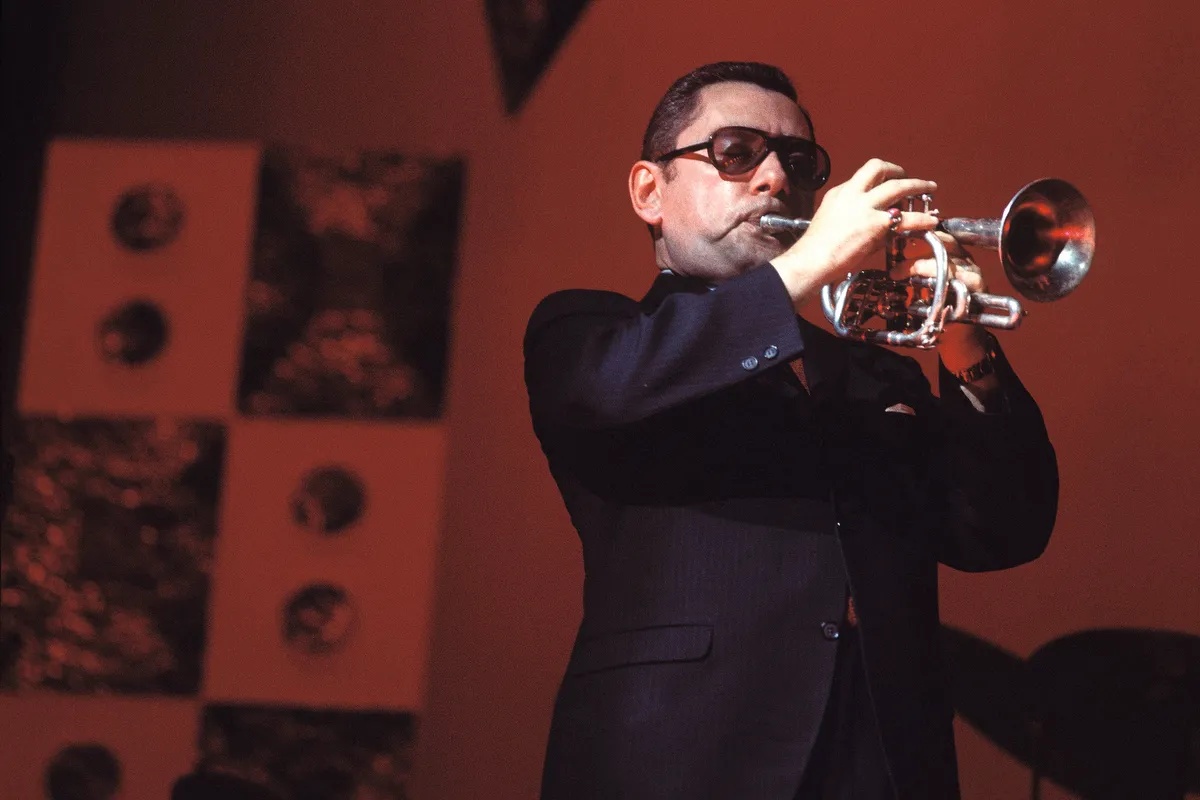
In 1957, a critic referred to Ruby Braff as ‘the 30-year-old traditional trumpet player’. The description implies the slightly barbed subtext that dogged Braff in his early days. What business did a young jazz musician have cultivating an old-fashioned style when his contemporaries were all going in the heady new directions of bebop? But Braff’s status was made even more complicated because he also rejected the approved reaction against bebop, the deliberate archaism of ‘trad jazz’. To Ruby, the real jazz tradition was the kind of rich, melodic invention effortlessly embodied by the star soloists of the swing generation, leading back to Louis Armstrong.
As he began his career around his native Boston, he was naturally drawn to players some 20 years his senior, such as clarinettist Edmond Hall and trombonist Vic Dickenson, who welcomed him as a rather unlikely kindred spirit. The diminutive young man was obviously one of them, with a fat sound that could encompass colour and nuance, a buoyant sense of swing, and technique as agile and supple as the beboppers’. From the beginning, the key jazz challenge was, in his words, ‘How does somebody play a well-written, well-constructed song, keeping the character of it and then adding something to it?’
He does just that in every track on the Vanguard compilation, Linger Awhile, drawn from records he made in the 1950s with the likes of Dickenson and Hall, and Count Basie’s great rhythm team of Walter Page and Jo Jones. Braff’s manifest talent in such illustrious company made him impossible to ignore or patronise, especially as jazz became less doctrinaire. Over the decades, until his death in 2003, he won a global following, despite his prickly personality.
He preferred the more intimate cornet to the trumpet, and his favoured settings were small groups, enhancing his instinct for structure and eloquence, his lifelong quest ‘to evolve a way of playing’. One of his favourite partners was pianist Ellis Larkins, and their 1994 duo CD, Calling Berlin, Vol. 1, is a masterpiece. Full of romantic opulence, rococo flourishes, wit and invention, it defines Braff as not just a traditionalist but a classic.
Clifford Brown (1930-1956)
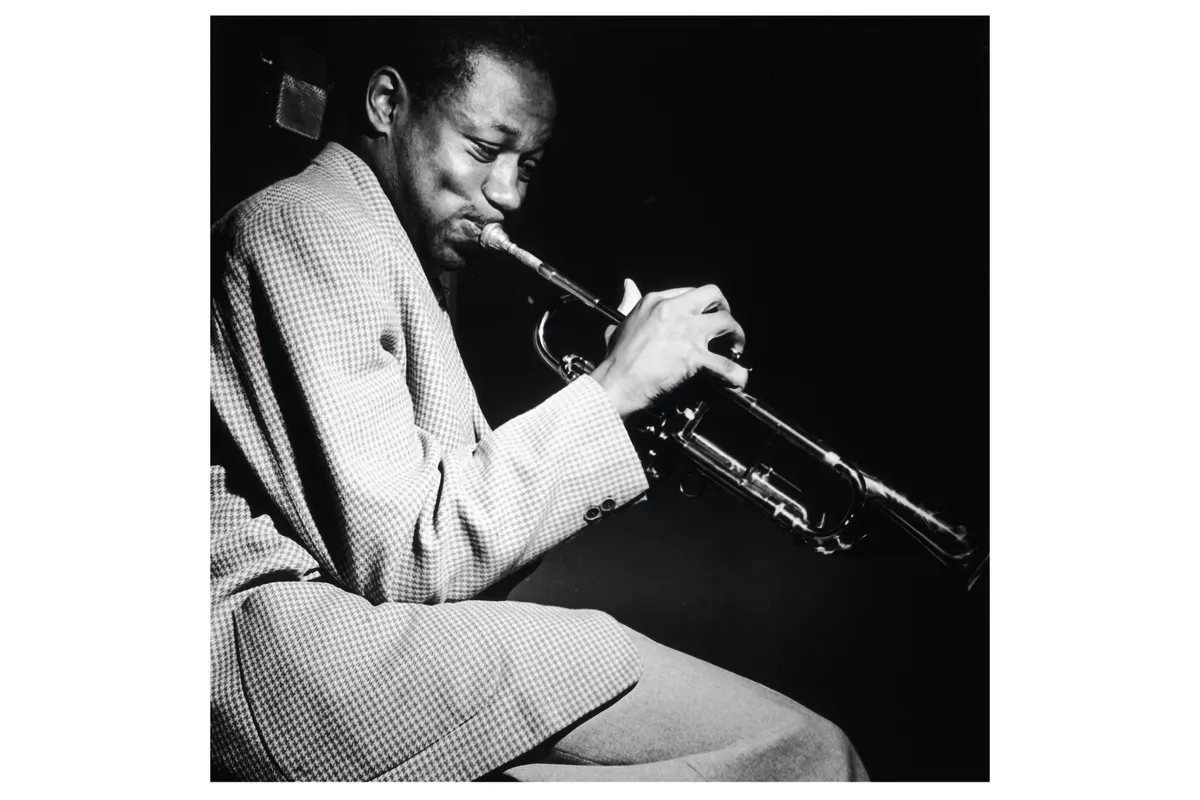
In its post-World War II heyday, bebop was known as much for its precarious lifestyle as for musical daring. Generated in no small part by the aura surrounding the mythic, self-destructive Charlie Parker, drug addiction became an occupational hazard among aspiring jazz players. But amid this chronicle of disaster, Clifford Brown presented a shining alternative. The most brilliant young trumpeter of his generation, he was completely drug-free, a model both as musician and man – disciplined and good-natured. Thus it seemed a particularly cruel trick of fate that, in 1956, he died in a car accident, aged just 25.
Though he had only been recording for four years, Brown left a considerable legacy on disc. He enlivened every session with his bright sound, impeccable facility and, above all, the sense that everything he played was driven by delight, an insatiable urge to say something new in each solo. Sheer fluency is perhaps his most striking quality, carried along by a rich tone, and an attack as crisp, intelligent and varied as the buoyant logic that informed his improvisations.
In the last 18 months of his life he had found his ideal medium, the quintet he co-led with the nonpareil drummer Max Roach. Brown and Roach were perfectly matched in their technical mastery and swing, and their shared conviction in the group’s creativity. Joining them on tenor was, first, the sinewy Harold Land, and then – in the band line-up at Brown’s death – a talent comparable to his own, the inventive Sonny Rollins.
Understandably, the quintet dominates the Clifford Brown compilation in Verve’s ‘Finest Hour’ series. The selection shows the range of both trumpeter and band. Check out the blithe ‘Joy Spring’, a sultry ‘Delilah’ and the eye-popping ‘Cherokee’, a bebop challenge piece which Brown races through at a lightning clip, unfazed by the pace and bubbling over with ideas. Though these wonderful recordings have continued to inspire trumpeters and delight listeners, is it hard not to invest them with a tinge of regret for what else Clifford Brown might have achieved if he had simply had more time. In the fitting words of Schubert’s epitaph, they enshrine ‘even far fairer hopes’.
Miles Davis (1926-1991)
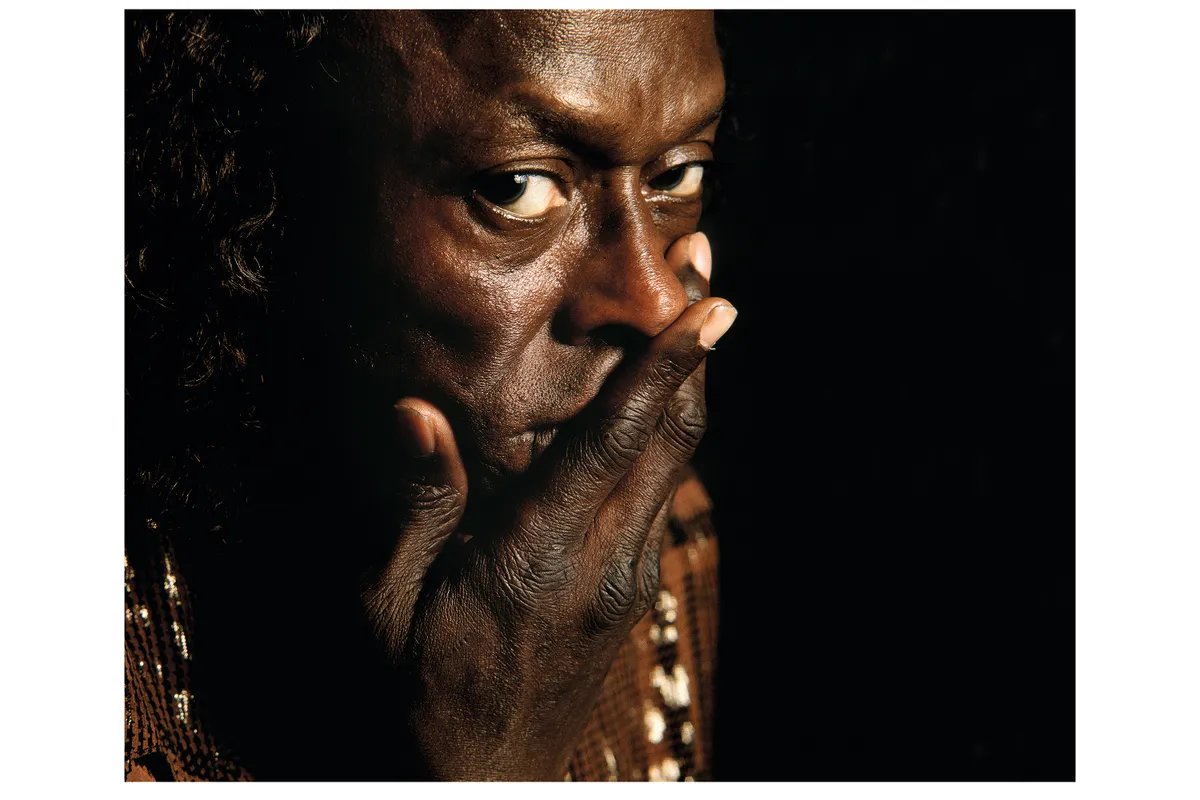
Most jazz musicians are happy just to achieve some popularity, but Miles Davis was a genuine icon. Famously fashionable even in his early days – a Davis biography was subtitled ‘The Man in the Green Shirt’ after a particularly stylish album cover – his adoption of jazz-rock in the 1970s and ’80s made him a superstar, bewitching audiences with not just his spare, declamatory trumpet-playing, but also his brooding persona. Dubbed the ‘Prince of Darkness’, he prowled about the stage in extravagantly hip garb, mercurially cueing his heavily amplified ensemble, creating a delicious aura of mystery and occasional menace.
Musically, Davis’s foray into fusion divided his fans. Older listeners preferred the Davis of the ’50s and ’60s, whose brilliant bands reinvented and extended the bebop tradition as well as launching such seminal talents as John Coltrane and Herbie Hancock. But change seemed the driving principle of Davis’s artistic and personal life, and embracing rock seemed a necessary progression.
However, a constant factor through all phases of his career was his close association with arranger/ composer Gil Evans. Mild-mannered, Evans acted as friend and musical advisor, making his crucial contribution as Davis’s orchestral partner in a great trilogy of albums from the late ’50s, Miles Ahead, Porgy and Bess and Sketches of Spain. Evans’s hovering impressionist colours and peerless feeling for space and texture provided the ideal foil for the trumpeter’s vulnerable lyricism, intensity and sly, sure-footed swing.
Though the Miles-and-Gil projects are all classics, Porgy and Bess may be the most consistently moving. Arranger and soloist transmute George Gershwin’s familiar melodies into new marvels, a series of soliloquies encompassing a rich array of emotions,
with Davis playing all parts. The record as a whole stands as a monument to the distinctive splendour
of Davis’s sound and imagination. Those abiding qualities communicate at once, regardless of his sometime status as cultural icon. But then jazz makes its ultimate appeal to art, not fashion.
Dave Douglas (b.1963)
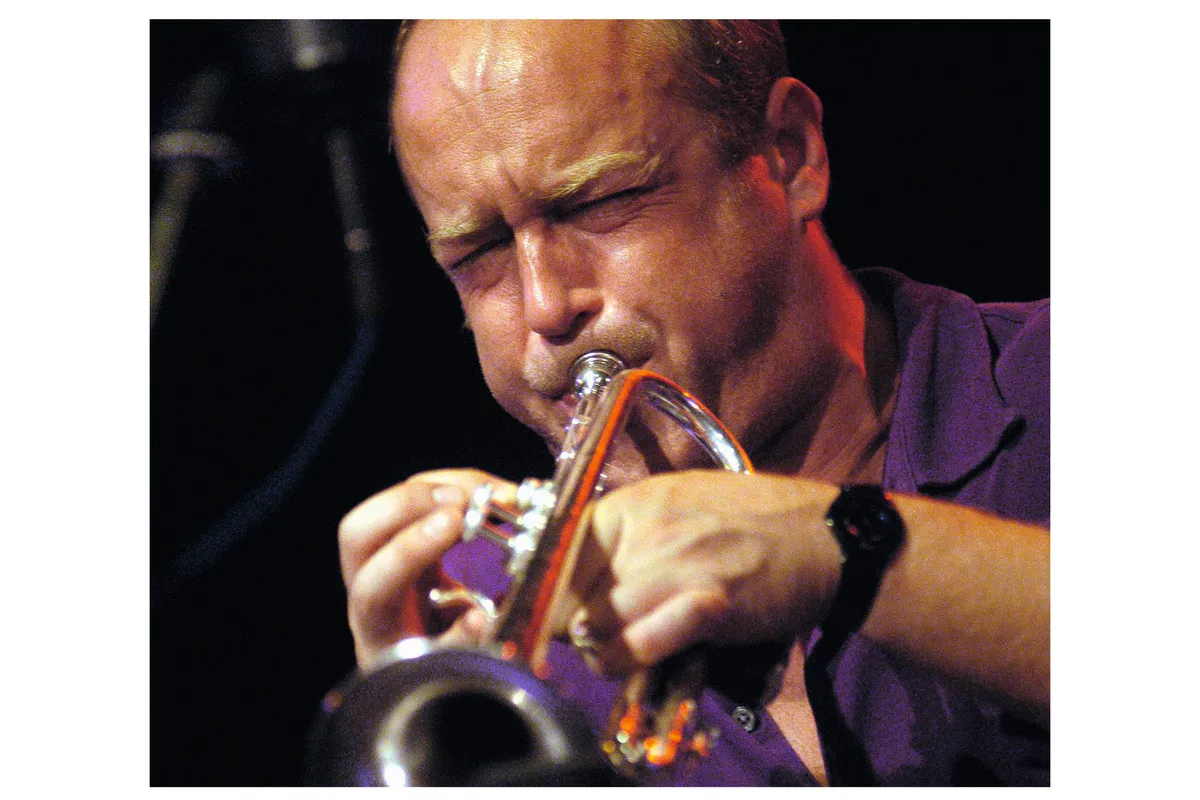
What makes jazz ‘jazz’ today? Improvisation, blues and swing, passionate individuality – the music may hark back to its classic qualities, but today’s scene has splintered into a plethora of postmodern fragments, from which every player has to construct a distinctive voice. No one has met this challenge with more imagination than trumpeter Dave Douglas. In fact, he has mixed feelings about what he calls ‘this beast called jazz’: though he’s always wanted to play it, he wants to incorporate all the other aspects of music and life that compel him, too. In 2003 he celebrated his 40th birthday with a concert given by ten different groups he has led, including the Tiny Bell trio, with guitar and drums (inspired by Balkan music); Charms of the Night Sky (a chamber group with accordion); a sextet devoted to works by neglected jazz masters; and a quintet with cello and violin whose repertoire includes Douglas originals, Webern and Stravinsky. What unites all these ensembles is Douglas’s virtuoso ability, and his protean skills as a composer.
He’s said he likes to explore ‘that boundary line between composition and improvisation, as a means to making beautiful music that is fun to play’. Every piece for every group is different, reflecting the distinctive character of the music and the performers. Nothing feels pre-ordained, yet dissonance and consonance, lyricism and wit combine as each work evolves into a spontaneous organic shape.
That sense of creative immediacy is what gives Douglas’s work its strong jazz identity, whatever his material’s source. His quintet CD, Convergence, includes a madly swinging version of a Burmese folk song, atmospheric treatments of Messiaen’s ‘Desseins éternels’ and Weill’s ‘Bilbao Song’, and among other originals his lament for the Gulf War.
In 2006, Radio 3 listeners experienced Douglas live with the premiere of Blue Latitudes, his meditation on the voyages of Captain Cook, featuring two of his regular partners, percussionist Susie Ibarra and bassist Mark Dresser, with the Birmingham Contemporary Music Group (who commissioned the work).
Roy Eldridge (1911-1989)
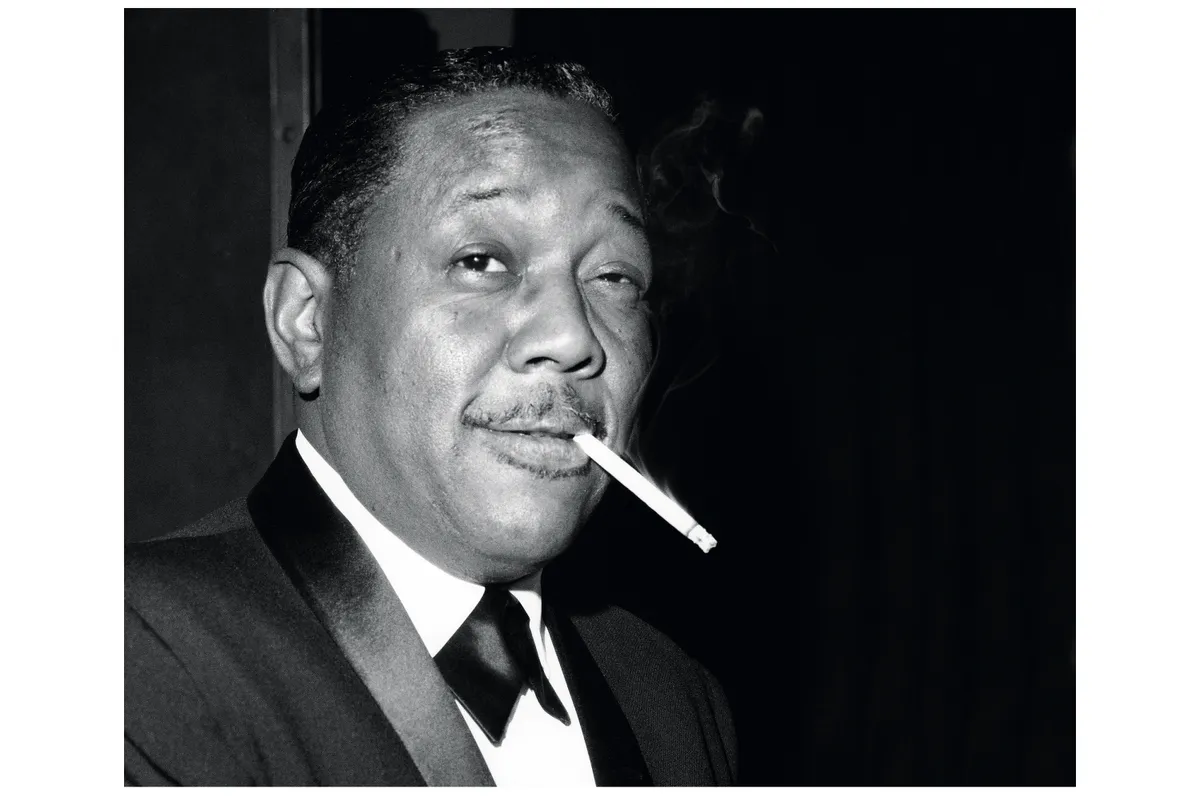
Not long after he arrived in New York in 1930, the teenage Roy Eldridge was dubbed ‘Little Jazz’, acknowledging both his compact build and musical intensity. From the start, the trumpeter was keen to make his mark, seeking out ‘every jam session going’, and taking on all comers in battles of speed, range and daring. Instead of the broad, heraldic character usually associated with the trumpet, the young Eldridge cultivated a super-charged fluency, imitating saxophonists like Coleman Hawkins.
Though his elders were impressed, they had reservations regarding his musical substance, which Eldridge himself came to share. In his words, ‘I was very fast, but I wasn’t telling no kind of story.’ With that realisation, his talent began to flower. His facility for high-voltage, bravura excitement was deepened and enhanced by an instinct for musical structure, so that an Eldridge solo became even more thrilling.
Through the 1930s, he was the pre-eminent jazz trumpeter, producing the kind of performances displayed in a Proper compilation, Roy Eldridge – Little Jazz Trumpet Giant. A feature like ‘Heckler’s Hop’ is
still a stunning experience: Eldridge seems barely able to contain himself as he blazes through his choruses with ecstatic logic. As a member of the Swing Era elite, he is surrounded by all-star company, including Hawkins, Benny Carter, Benny Goodman, and his favourite partner, tenorist Chu Berry.
As his fame increased, Eldridge’s stature was such that he was able to defy racial prejudice and join the top-flight white bands of Gene Krupa and Artie Shaw. Though engrained racism exacted a painful toll, his gifts are showcased on the Krupa classics ‘After You’ve Gone’ which leaves the band panting to keep up – and a heartfelt ‘Rockin’ Chair’. His influence on young trumpeters was immense: he provided a model for such bebop pioneers as Dizzy Gillespie, who described Eldridge as ‘the Messiah of my generation’.
In later years, Eldridge continued to inspire players and listeners, in concert and in a ten-year stand at a New York club. By his death in 1989, his nickname had been shortened to ‘Jazz’ – the thing itself, defining him.
Continue reading our guide to the best jazz trumpeters ever here (2/2)
Art Farmer (1928-1999)
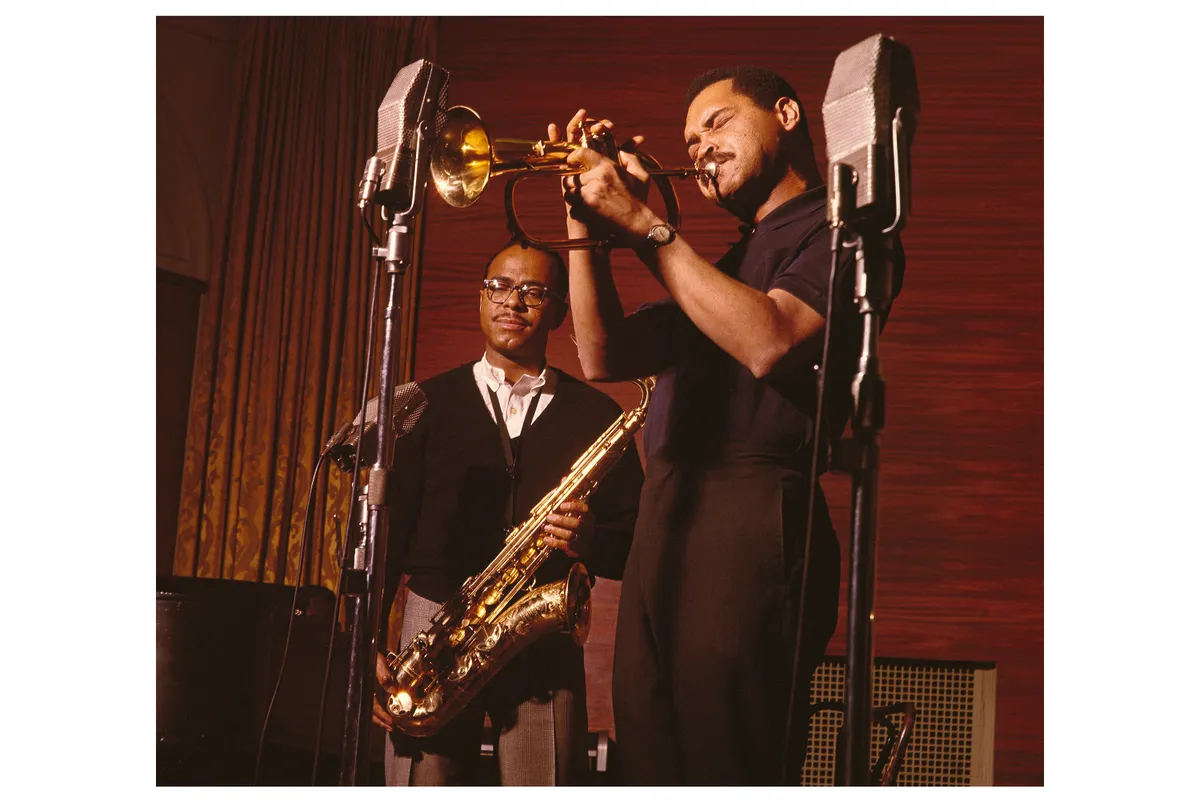
Art Farmer’s approach to jazz seemed simplicity itself. ‘What I try to do with a song,’ the trumpeter once said, ‘is to get as much enjoyment out of playing it as I can.’ Yet his style expressed a quiet profundity and originality that defied the obvious. Although, born in 1928, he was a member of the bebop generation, he eschewed obvious pyrotechnics. A Farmer solo didn’t merely ‘run the changes’, ripping through the chords, but created an absorbing, probing shape, at once subtle and lyrical.
In terms of facility, he could do anything he wanted, and his technical command and thoughtful musicianship ensured first-call status in the booming jazz scene of the 1950s. After apprenticeship with Lionel Hampton and other big bands, Farmer starred with two of the most prominent small groups of the time – Horace Silver’s hard-driving quintet, and the cool quartet of Gerry Mulligan.
At the same time, he was leading his own groups in a series of widely praised albums. One of the best is the eponymous Art, with a quartet including the trumpeter’s kindred spirit, pianist Tommy Flanagan. Effortlessly compelling, it’s a classic example of Farmer’s special gift for reinventing standard tunes. ‘Younger than Springtime’ becomes a kind of idyll, his tone both round and clear. ‘Who Cares’ shows his fiery side, full of unexpected angles, and ‘I’m a Fool to Want You’ is a reflective ballad, but not morose.
In the 1960s, ever searching for his ideal sound, Farmer switched from trumpet to the mellower flugelhorn (he ultimately adopted a hybrid called the ‘flumpet’), which provided the perfect sonority for the quartet he co-led with guitarist Jim Hall. Hall was a kindred spirit, and their live performances CD is a feast of tender lyricism, sidelong wit and the grooving swing epitomised by ‘Stompin’ at the Savoy’.
In 1968, Farmer joined the Austrian Radio Orchestra, with a busy career until his death in 1999. When I interviewed him once in London, I took along my vinyl copy of Art for him to autograph. ‘That’s my favourite album,’ he said. ‘I mean, that’s my favourite album by Art Farmer.’ Enjoyment from him to us.
Dizzy Gillespie (1917-1993)
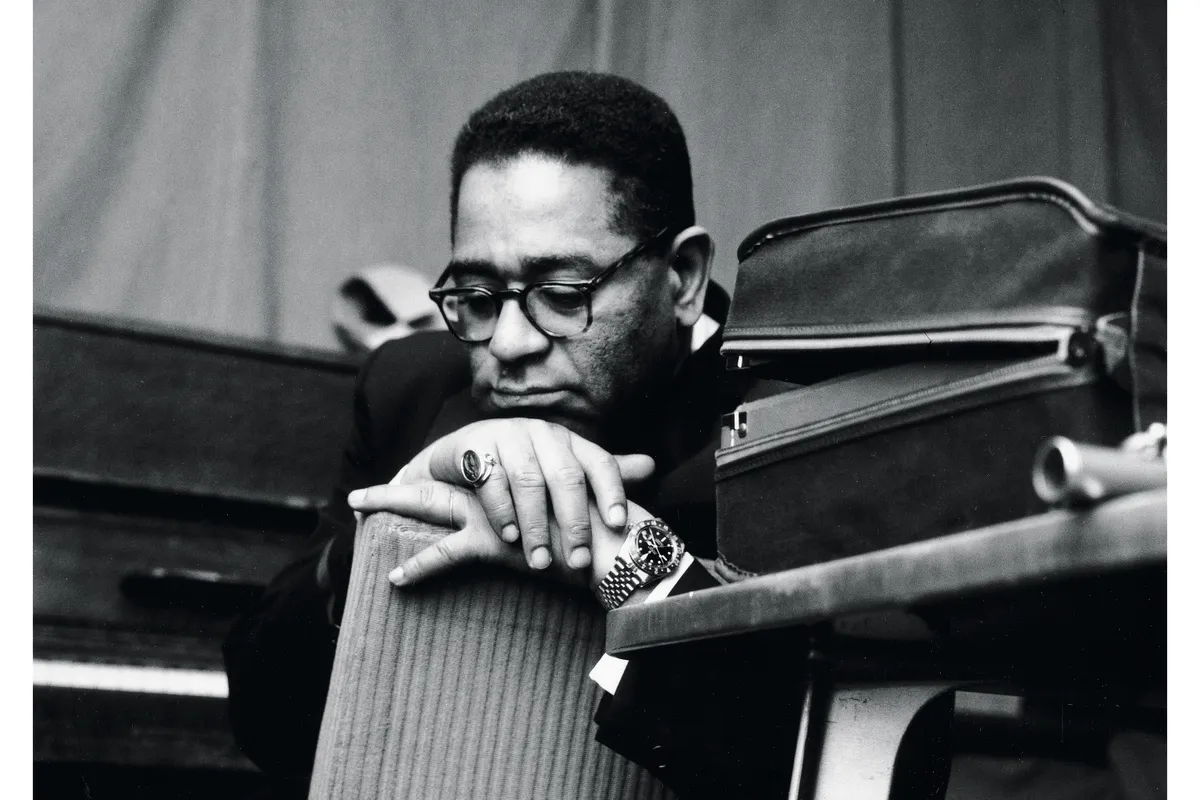
Dizzy Gillespie’s old friend, bassist Milt Hinton, used to say, ‘Chords are our love, but rhythm is our business,’ and that might have been Diz’s lifelong motto as well. Whether the group was large or small, the groove headlong swing or sizzling Afro-Cuban, a Gillespie band lifted you out of your seat with its sheer musical energy. And the crest of that wave was the leader’s fiery trumpet, which had revolutionised jazz brass in the ’40s. The young Gillespie could play higher and faster for longer than anybody before him, and his passionate, coruscating solos define the brave new world of bebop.
Just as radical were his harmonies and rhythms – fusillades of notes tumbling over bar-lines, defying conventional chord structures. And this was not mere ‘subversion’, but a well-conceived creative strategy. Despite his madcap reputation, Dizzy Gillespie was one of the prime theoreticians of bop and a tireless teacher, demonstrating, encouraging, inspiring.
Since his fellow professionals knew he was ‘dizzy like a fox’, it’s paradoxical that the public perceived him as a joker, a hip master of the revels. His sartorial style – goatee, beret, horn-rimmed glasses – was the popular image of bebop attire, as his arch humour, bandstand antics and scat vocals set the standard for bop behaviour. Yet Gillespie’s willingness to play the showman was part of the survivor’s instinct which gave him a long career, while his contemporaries destroyed themselves, by drugs, booze and excesses of all kinds.
The Ken Burns CD offers a valuable survey of his achievement. His early virtuosity is startling in such bop classics as ‘Groovin’ High’, with Charlie Parker. ‘I Can’t Get Started’ enshrines his intense ballad style, while his famous ‘A Night in Tunisia’ displays his fascination with Afro-Cuban rhythms. The astonishing ‘The Eternal Triangle’ exhibits Gillespie’s gladiatorial side, as he goes toe-to-toe with two giants of the tenor saxophone, Sonny Rollins and Sonny Stitt. And finally, ‘Swing Low, Sweet Cadillac’ shows Diz the charmer, in a wry vocal that’s part spiritual, part samba and wholly delightful. Few players have embodied the essence of jazz as completely as John Birks Gillespie.
Freddie Hubbard (1939-2008)
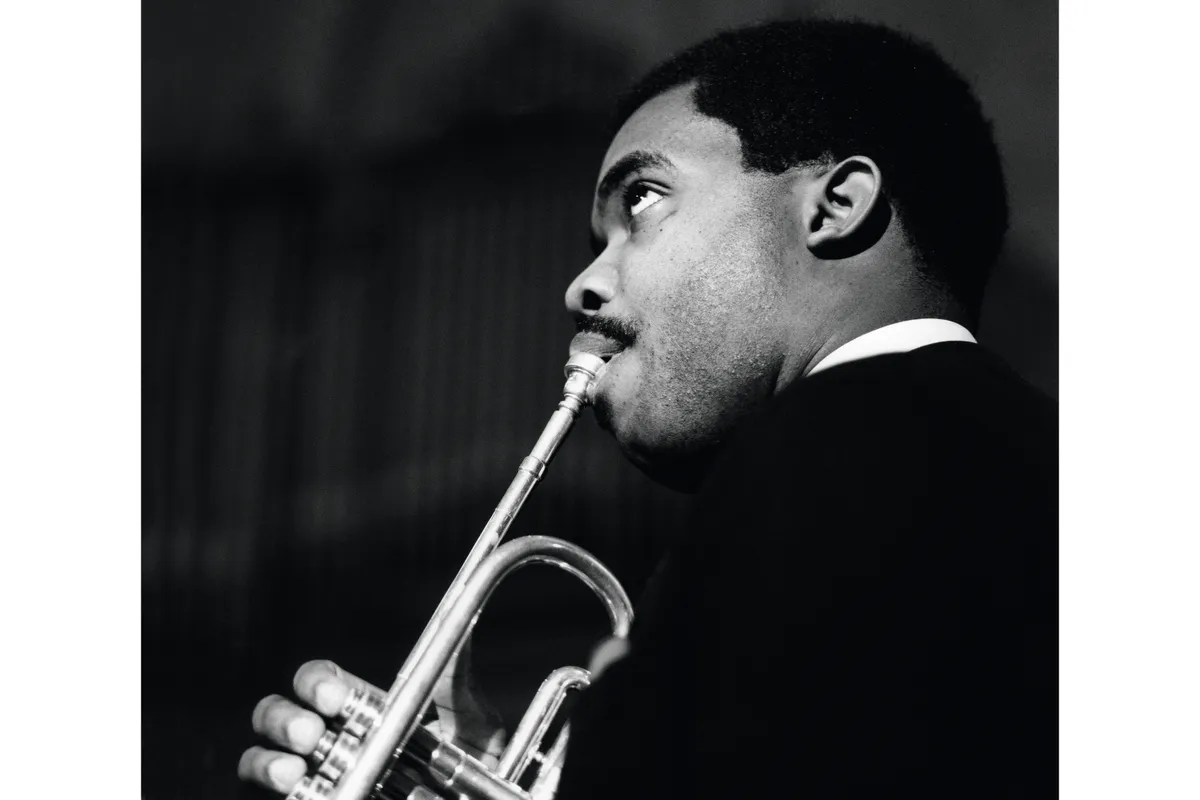
When Freddie Hubbard died at the end of 2008, it was sobering to think that the younger generation of jazz fans might not be sure who he was. Aged 70, the trumpeter had been largely inactive for almost two decades, his career plagued by lip trouble and a lack of direction. It was a far cry from his 1960s status as a new trumpet king, synonymous with cutting-edge excitement, a key player in most classic sessions of those heady days.
Hubbard’s presence here illuminates a number of other entries: Herbie Hancock’s Maiden Voyage; Oliver Nelson’s The Blues and the Abstract Truth; and Eric Dolphy’s Out to Lunch. That varied and imposing sequence gives an idea of his creative range, equally at home in Hancock’s modal impressionism, Nelson’s subtly-wrought ensembles, Dolphy’s go-for-it freedom.
Underpinning it was his command of the trumpet – a fat, clarion sound and crisp attack, effortless top notes, fluency in every register. And across registers as well – practice with Dolphy encouraged Hubbard to leap from octave to octave like a saxophone, giving his solos a sense of adventure. John Coltrane, another musical ally, invited him to take part in his avant-garde extravaganza, Ascension. But he also relished grooving hard-bop swing, and the romanticism of ballads.
There seemed to be nothing he couldn’t do. His problem, as Hubbard put it, was ‘being able to play a little bit of everything’. In the late 1960s and ’70s, he made a bid for commercial stardom by switching to jazz-rock, then, in the ’80s, returned to the rejuvenated hard bop scene, only to be eclipsed by Wynton Marsalis. In terms of musical identity, he seemed to lose his way, presenting himself as a kind of all-purpose virtuoso. Overwork brought the lip damage which came to a head in 1992, after a high-note duel.
The rest was mostly silence. A CD from 2007 makes uncomfortable listening as Hubbard struggles on flugelhorn. Much better to remember him at his best, as a leading actor in a scene bursting with promise, a trumpet-comet blazing in the sky. Hancock’s Empyrean Isles and Wayne Shorter’s Speak No Evil both enshrine his brilliance in an era which he called ‘the golden age’.
Bunk Johnson (1879-1949)
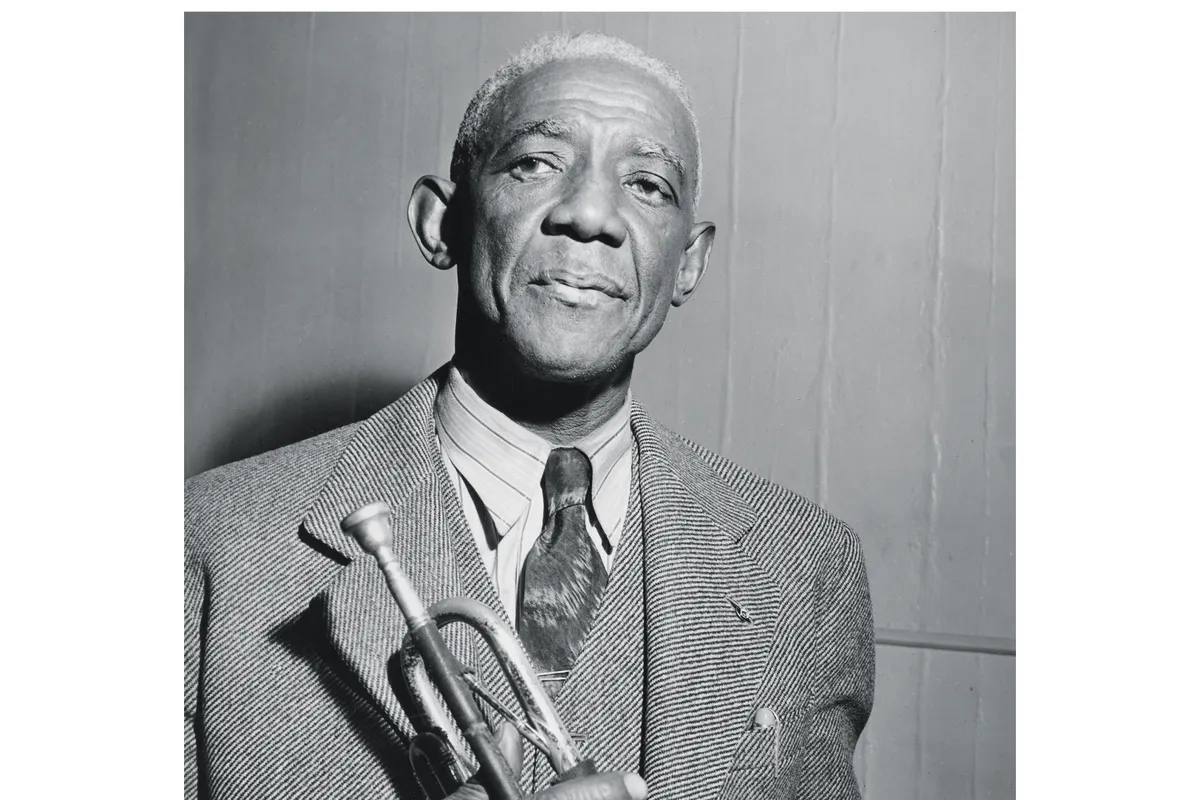
In the autumn of 1945, the hottest thing in New York was an ancient black trumpet player who, just three years before, had lacked both an instrument and teeth. What Willie ‘Bunk’ Johnson did possess, however, was historic, even mythic charisma. He’d been present in New Orleans at the very dawn of jazz, and played with Buddy Bolden, the fabled cornettist who’d virtually invented the music. And now here he was, freshly equipped with dentures and horn, a living icon pouring out authentic blues and rags with a company of similarly venerable New Orleanians. Audiences weary of the noisy regimentation of swing and the edgy complexity of bop were entranced by the throbbing warmth of ‘real jazz’, as if they’d been transported to the halcyon days of Basin Street. Unfortunately, Bunk’s moment in the sun was short-lived. Though a wily, urbane character, adept at charming his patrons and the media, he was also wilful and fond of a drink. Rather contemptuous of the band that had been assembled for him, he couldn’t be relied on to perform at his best or even turn up. Within a year, critics lamented that ‘the name Bunk Johnson (had) lost its magic and its meaning’, and he returned to Louisiana, where he died in 1949.
All the same, his brief acclaim made Johnson the figurehead for a worldwide boom in the popularity of traditional jazz which continued after his death: Johnson sidemen such as clarinettist George Lewis forged international careers, and made New Orleans a tourist mecca. But Johnson remains controversial, revered by many as a unique musician, dismissed by others
as a has-been who was second-rate in his prime.
And yet the Johnson records still cast their spell – the singular vitality of New Orleans, pulsating and human, with a communal rhythm that’s more important than individual virtuosity. Bunk’s Brass Band and Dance Band was recorded in New Orleans, and captures the exuberant brio of a Crescent City street parade. Bunk Johnson and his New Orleans Band was made during his celebrated New York stay, and includes a pair of live tracks, bursting with atmosphere. His band defies you not to tap your feet.
Humphrey Lyttelton (1921-2008)
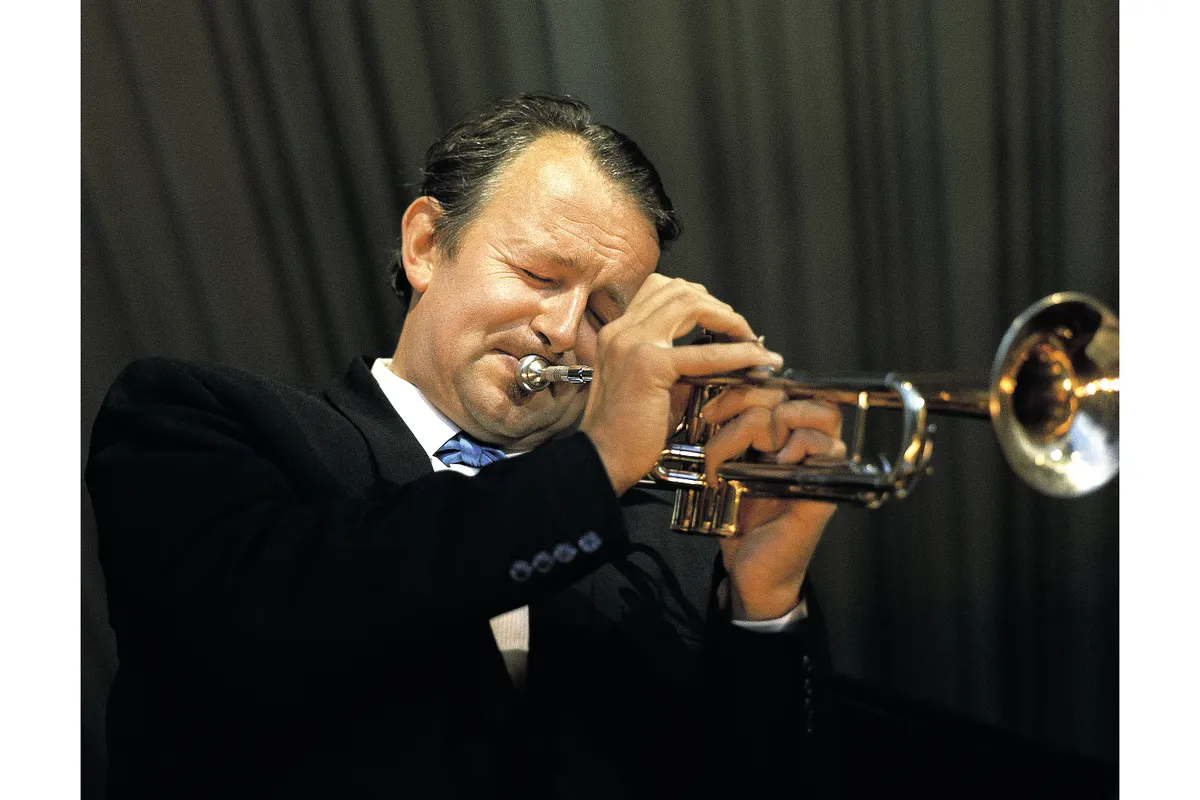
Radio personality, humorist, writer, cartoonist, ex-Guards officer and aristocrat – Humphrey Lyttelton’s status as one of Britain’s favourite all-rounders sometimes overshadowed his true stature as a jazz musician. But jazz was always his first, abiding love. In 1936, as an Eton schoolboy, he fell under the spell of Louis Armstrong, taught himself trumpet and formed a band. After World War II, he spearheaded Britain’s trad-jazz revival, though he was always more in it than of it. Bored by the purists’ dogmatic style, he broke ranks in 1953 by adding a non-trad saxophone to his group. At the concert, outraged zealots responded with the banner: ‘Go home, dirty bopper!’
But as the title of one of Lyttelton’s books put it, I play as I please; what pleased him was imaginative, swinging jazz with plenty of emotional energy. This was evident from the washboard whimsy of his early recordings and his jovial forays into calypso, to the jump-band vigour of the mid-1950s that evolved into the smooth, hard-driving mainstream which he continued to the end of his life. In a career spanning over six decades, till his death in 2008, he encouraged and inspired many of the most prominent jazz musicians in Britain.
His trumpet style displayed classic virtues – fluent ideas; a bright, personal sound; a rhythmic zest that communicated at once. In 1956, those qualities combined in an unlikely hit – ‘Bad Penny Blues’, a surging, preaching plunger-muted solo which remains a hardy perennial on Radio 3’s Jazz Record Requests. But it’s only one of a string of Lyttelton performances which still give pleasure. Happily, they’re available in a couple of bumper compilations, surveying the trumpeter’s achievement over the first decade of his career. EMI’s bargain three-CD set, The Best of Humphrey Lyttelton, offers myriad treats from
1949-57, though it’s light on discographical information – dates, but no line-ups – while Avid’s well-presented 2-CD package collects four vintage Lyttelton LPs. Both offer a rich tribute to a man who was at once a national treasure and, in jazz, the real deal.
Wynton Marsalis (b. 1961)
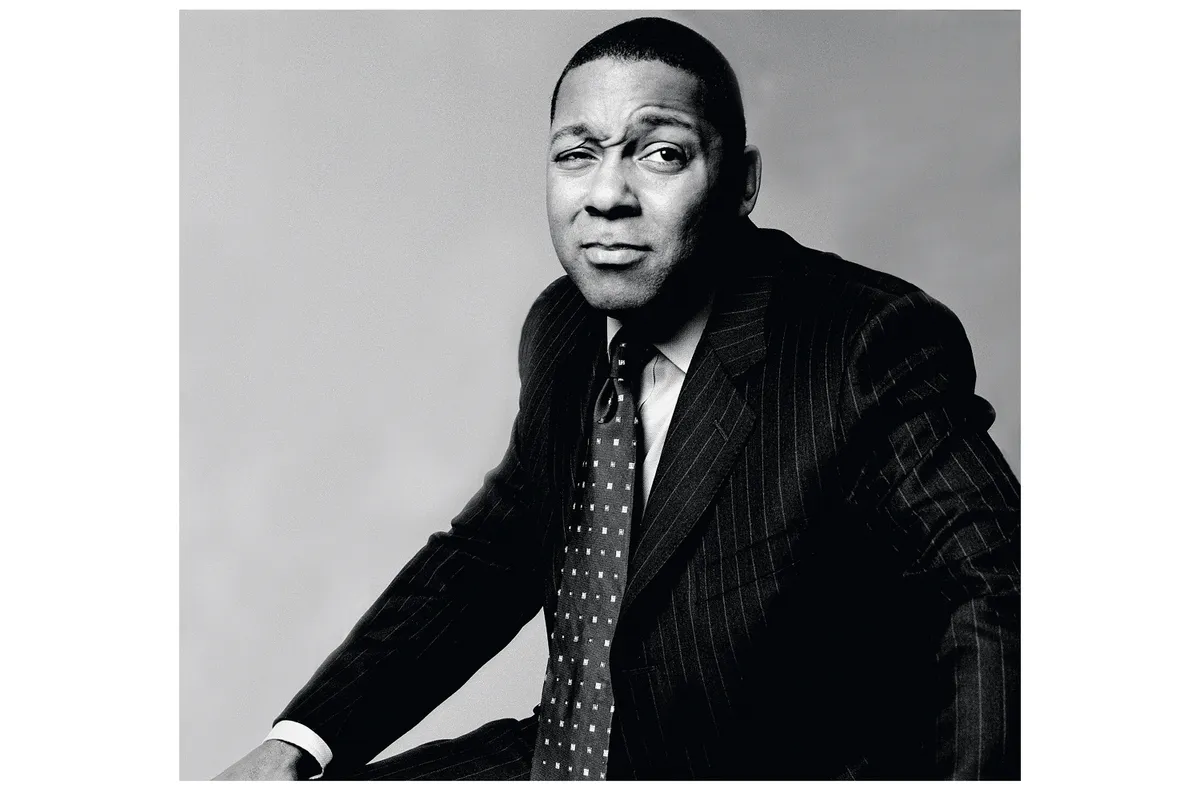
How you feel about Wynton Marsalis may indicate how you feel about jazz. To some fans he’s been a kind of saviour, restoring the music’s essence by reconnecting it to its roots in blues and swing, after its post-1960s fragmentation into fusion, free, world, acid, smooth, etc. But to others, his neo-conservatism is actually anti-jazz, restricting its evolutionary energy and creating ‘mausoleum music’.
But no one doubts Marsalis’s authority, sincerity and talent. His virtuosity made him famous when he was barely out of his teens, achieving the unprecedented feat of winning Grammy awards in both classical and jazz categories in the same year. In fact, his passion for the trumpet first led him to jazz. Growing up in New Orleans in the 1970s, Marsalis was a mere dabbler in funk until his classical trumpet teacher introduced him to such jazz masters as Clifford Brown. His imagination was fired by a music that combined individuality and virtuosity, forged in African-American experience.
That devotion to the heritage and expressive power of jazz still informs everything Marsalis does. It’s why he has fiercely decried the sort of all-purpose dumbing down which, to him, misrepresents the legacy of such African-American heroes as Armstrong, Ellington and Monk. As the trumpeter berated a critic: ‘We are not some hip sub-culture for your entertainment. Jazz is the most intelligent music of all time.’
Approaching 50 he continues to commit his energy and intelligence to promoting the cause of jazz on every front, from tireless touring to his exhausting array of activities as artistic director of Jazz at the Lincoln Center. For Marsalis, education is the key to conveying the true glories of jazz tradition. If a kid greets him with a trumpet and a question, the result is an on-the-spot lesson. No one can deny his dedication.
Equally praiseworthy is his ambition and the variety of his output, as player, leader and composer, in every format from quartet to symphony orchestra. The 1985 quintet album Black Codes (From the Underground), (currently unavailable) with saxophonist brother Branford, and the 1992 ballet Citi Movement, offer illuminating perspectives on a rare musical character.
Lee Morgan (1938-1972)
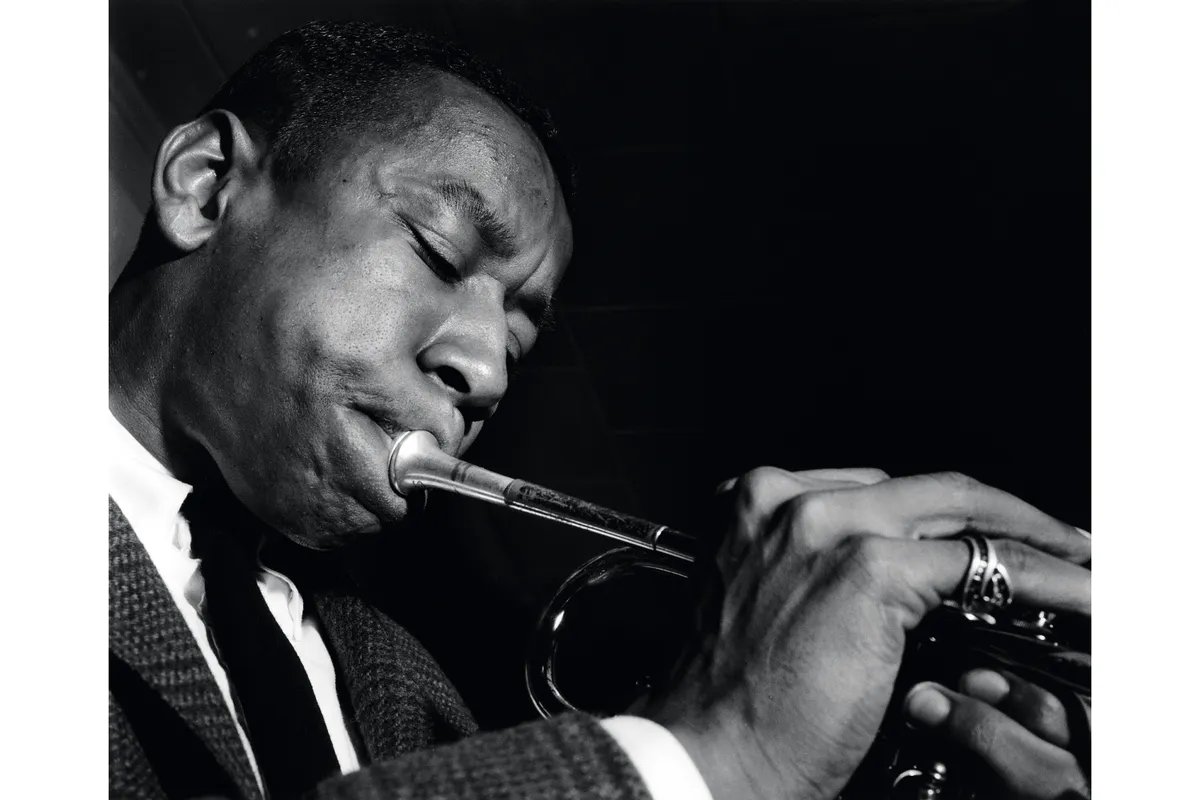
Critics like to describe certain records as ‘seminal’ and, in several ways, Lee Morgan’s The Sidewinder actually was. It marked a return to form for the erstwhile trumpet prodigy, whose career had gone adrift due to drugs. In 1963, still only 25, he was already a veteran of the Dizzy Gillespie band – which he had joined at 18 – and Art Blakey’s Jazz Messengers. The epitome of the bravura energy and bluesy drive of hard bop, Morgan was renowned for his cocky assurance, flashing technique and love of playing. He attacked solos with a boyish zest, as if he couldn’t wait to tell you everything he was feeling and show you what he could do.
His blend of funk, fire and fun – plus a knack for adventurous phrasing – gave an exuberant edge to all five tracks on The Sidewinder. But the surprise was its title tune, a sinuous blues line with an infectious, hip-swinging beat which caught the ear of the public. Morgan and his record company, Blue Note, had a huge Top 40 hit on their hands, with consequences they could not have predicted. Having tasted commercial success, the trumpeter, though passionate about his art, felt his subsequent albums needed a groovy, R‘n’B-style hook. And Blue Note, a small label proud of its independence, found it couldn’t meet the demand for The Sidewinder. So it joined forces with a larger firm, and gradually moved away from its pure-jazz ethos into the twilight zone of fusion and crossover.
But, as the 1960s wore on, that was clearly where jazz was headed. The Sidewinder inspired countless dumbed-down imitations, without the original’s subtle flair. Ironically, Lee Morgan fiercely opposed the trend he was thought to have started, insisting on the vital depth of jazz, which he pursued in his own playing. But his career and life were savagely ended when he was shot at a club by a jealous woman in 1972.
It’s a sad and curious tale, but what remains is Lee Morgan’s achievement, not least in The Sidewinder itself. Freed from its cultural context, it retains all its ebullience, energy and charm and its famous title tune is an abiding delight. The disc’s real distinction, like that of Lee Morgan himself, is a timeless creativity.
Joe 'King' Oliver
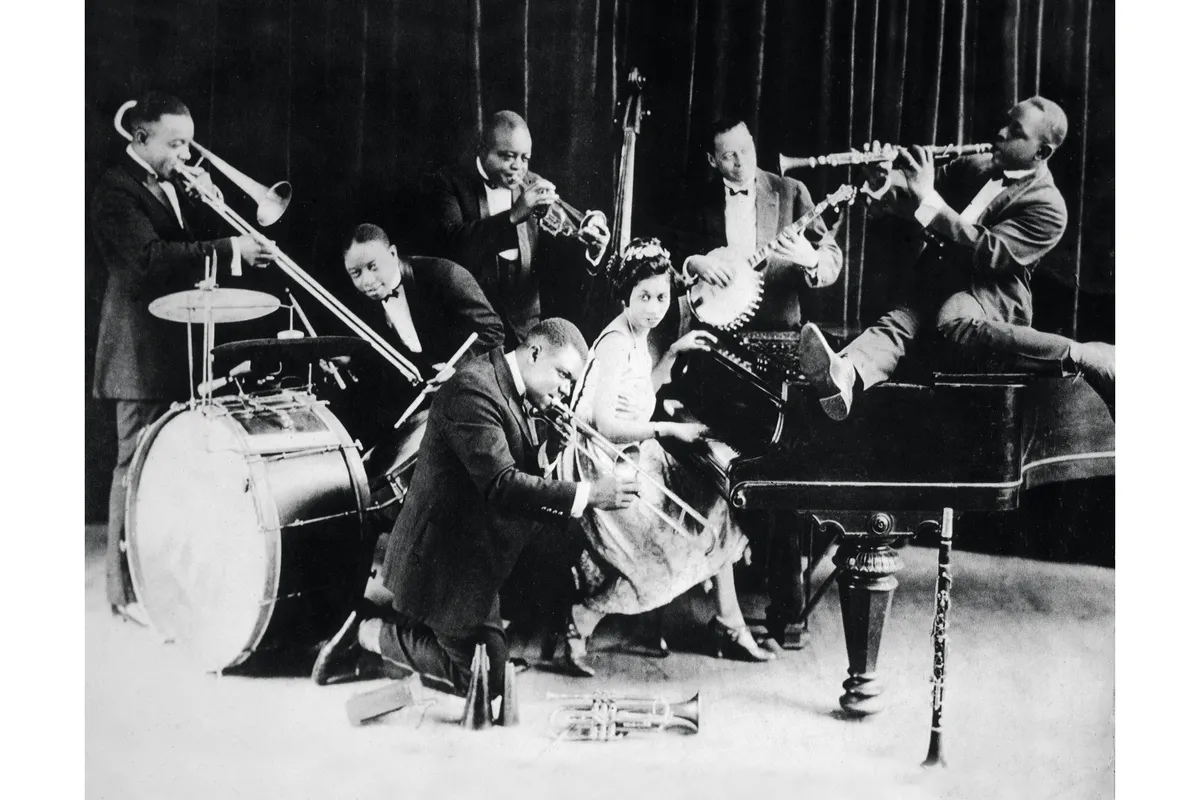
I have observed that, in jazz, all roads lead back to Louis Armstrong. But Louis’s road began with the man he honoured as his inspiration, idol and mentor, Joe ‘King’ Oliver. During World War I, Oliver was the cornet king of New Orleans, and in 1919 he went north to Chicago, where he won similar renown with his Creole Jazz Band, dazzling dancers, listeners and musicians with the sound of Crescent City jazz.
Oliver had been a father figure to young Armstrong, and in 1922 he invited his protégé to join his group in Chicago. Armstrong’s brilliance was already evident, and his arrival transformed the Oliver band from a classic ensemble to a legend. It’s our supreme good fortune that the next year the group put much of its repertoire on disc – 37 sides which constitute the
first unequivocal demonstration of the expresssive potency of jazz, in all its variety and fire.
While it’s easy to marvel at the immensity of Armstrong’s burgeoning talent, the overwhelming effect of these records is the power of the Creole Jazz Band as a whole. With King Oliver firmly at the helm, the group achieves a level of focused energy and invention that is simply irresistible. In accord with New Orleans practice, theirs is largely an ensemble music – solos tend to be short, adding colour to the overall texture. But the definition of the individual voices is a constant delight, as is the unflagging, pulsating swing.
Among the horns, Johnny Dodds contributes fluent embellishments, trombonist Honore Dutrey pungent bass lines. But spearheading the attack are the cornets of Oliver and Armstrong. The King excelled at muted effects and the blues, his robust, vocal quality perfectly complemented by Armstrong’s bravura open horn. Their two-cornet breaks, as on ‘Snake Rag’, seem miracles of spontaneity and their solo work sounds equally inspired. Armstrong is majestic on ‘Riverside Blues’ and Oliver’s choruses on ‘Dippermouth Blues’ became standard for anyone playing the tune thereafter.
The Creole Jazz Band’s complete oeuvre is available on a two-CD set from Retrieval, while Oh Play That Thing, on Naxos, offers an excellent selection of a seminal contribution to jazz.
Read the latest reviews of jazz recordings here
Words by Geoffrey Smith, photos by Getty Images
